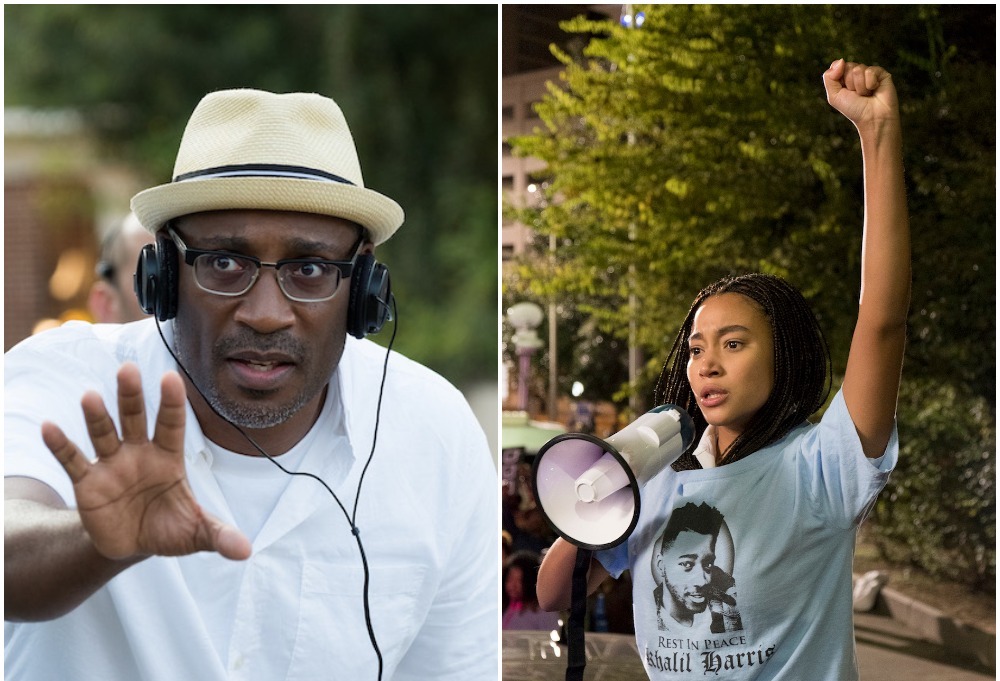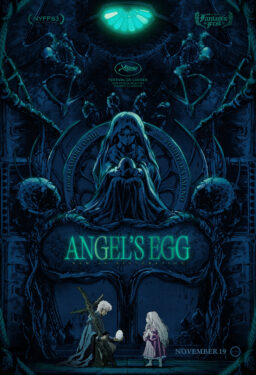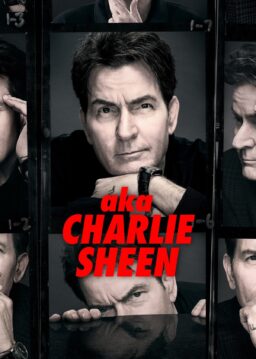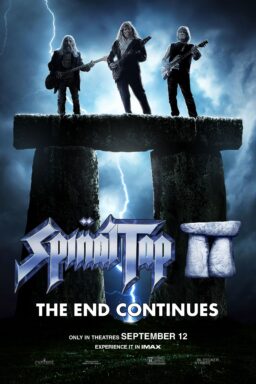We are republishing this piece on the homepage in allegiance with a critical American movement that upholds Black voices. For a growing resource list with information on where you can donate, connect with activists, learn more about the protests, and find anti-racism reading, click here. “Mar #BlackLivesMatter.
Actor/activist Amandla Stenberg read The Hate U Give by Angie Thomas before it was published. As she began to work on bringing it to the screen, she did not know that it would debut on the New York Times best-seller list and stay there for almost a year. But she did know she wanted to tell the story of Starr, a black girl who lives in a poor community but goes to a private school with mostly white students. Starr keeps her two worlds separate until she witnesses a friend being shot by a white police officer, which causes her to think more carefully about who she is and how she wants to be seen.
In an interview with RogerEbert.com, Stenberg and director George Tillman, Jr. talked about the acting and cinematic tools they used to show the gulf between Starr’s two communities, and about one scene so carefully balanced that they shot it two ways before they could decide how it would end.
The actors in this film are extraordinary. Every role is beautifully performed. George, how did you think about casting?
GEORGE TILLMAN, JR.: I heard that Amandla was reading the book. I hadn’t seen a lot of her work but I knew her as an activist because I had seen her speak a lot. When we sat down and talked, I was just blown away by her. I was just drawn in by her eyes and her face and I felt like I knew exactly what lens to put on her. I always knew it was a 75mm handheld lens. She was amazing. So we all teamed up together and I pitched it to studio because I had a relationship with Elizabeth Gabler there and that was the starting point. Once we started moving everyone was very excited and it just came together through friendship. I just reached out to everybody personally.
It was important to get the role of Starr’s father right. I knew that the Mav and Starr’s relationship was the key because everybody loved Starr and Mav in the book. So I reached out to Russell Hornsby. I loved his work over the years and I felt like he has been underrated for many years. I just felt like he was the guy, so I showed Amandla his tape.

Amandla, the first thing we learn about Starr is that she does a lot of code-switching and then over the course of the film she begins to integrate all the different parts of herself. Tell me how you kept it all straight.
AMANDLA STENBERG: I fell in love with the book first. It wasn’t even published yet, we didn’t know it was going to end up being number one for eighty weeks or whatever crazy number that it’s at now. I fell in love with the book because of Starr and one of the first things she does is speak so candidly about having these two versions of herself that she presents depending on the environment that she’s in. That was so special to me as someone who has experienced that. I think it’s part of the contemporary black experience that you understand that your success is often conditioned upon how you present yourself. Often showing up all the way as black in white spaces doesn’t really work. So I fell in love with that idea and I already understood it because I had a really similar experience growing up in a black neighborhood but then going to a school across town that was white and privileged and where I presented myself differently and tried to make myself fit in as much as I could. So I already knew how to construct Starr because of my own facets of self. I think we were dramatizing it slightly for the screen and so George and I came up with a scale to dictate depending on where Starr was at in the story and what environment she was in and what facets of self she would show.
How did you put that into words? How did you communicate it?
GT: It was really like a chart.
AS: It was a chart. I’m trying to remember exactly what it looked like. It had five different bars. One was called Williamson; one was Garden Heights. So it was like Williamson 1, Williamson 2 and there’s kind of this grey zone in between then it would be Garden Heights 1 and Garden Heights 2 and they each add to the facets or ways in which Starr would present herself depending on the environment and how comfortable she was and what point in the story she was at in terms of her comfortability with self.

Is that also reflected in her hair? Very intricate and braided through most of the film, and then at the end very soft and natural?
AS: Yes, that was intentional and I think that was my idea. I think that was really important to me, as I was such a lover of the book that we wanted to honor the book cover because Starr has her hair natural on the book cover and not braided. One of the reasons we decided to braid was because my hair was so short when we began filming and braiding is easy because you can just easily put in extensions. And it felt like the braids were reflective of who Starr is and it would be easier throughout the production. But we still wanted to honor that idea of natural hair so that’s why it comes in at the end. It is supposed to be a symbol for her being more self-accepting, being accepting of her blackness and being accepting of the different facets of herself.
GT: We had a really great DP, Mihai Malaimare Jr., who works with Francis Coppola and he did PT Anderson’s “The Master.” I really love working with him because we really wanted it to be very cinematic and have the two worlds be completely different because that’s our experience. I moved over to a public school that was predominantly white, like 70 percent, and Amandla was having that conversation with me about her school. We felt like the worlds are completely different, the sounds are completely different, so even the sound design has to be different. Everything is handheld on one side and everything is Steadicam or dolly on the other side. And Starr is always isolated when she’s in Williamson. The hallways are so wide. We actually got hold of these lenses that were the only two left from “Ben Hur.” We used the “Ben Hur” lenses.
The Charlton Heston “Ben Hur?”
GT: Yes, those exact lenses. We were very blessed to have them to really distinguish the style. So it was a lot of work that was put in costumes and wardrobe and I was able to give them the list of the codes we had for all the different scenes so everybody knew exactly where everybody was. The key for that is to have the audience have the experience Starr is having. How can someone who is outside our culture be able to experience and relate to that? So when you look at that scene when she’s flashing back and she’s talking about the school that she can’t go to in Garden Heights, that school is over-packed. I used a very much longer lens and there’s a lot of activity and it’s just overcrowded when you compare it to the white school that she goes to in Williamson. We wanted audiences to have the experiences that make them feel like they are a part of it even down to the shooting. We were always inside the car in that scene. It’s Starr’s perspective so I wanted the audience to feel that as well.

One of the most significant scenes in the film is the conversation between Starr and her uncle Carlos, a police officer played by Common, about the ways he might look at a possible shooter depending on his race. What does Starr learn from that scene?
AS: I think it’s difficult for her to understand what he’s saying or even empathize with it because she has a very clear idea of what is right and what is wrong. I don’t think either of them overall is right. I think that Carlos is now getting in a very tricky place to be and he’s dealing with a lot of internalized bias even towards himself and his own community. He’s cognizant of that because of something he’s been taught through the institution he’s a part of. It’s not right that he does that but in some ways it makes sense that he would feel that way considering what he has been exposed to versus Starr having had this really sensitive traumatic experience so recently, giving her a much clearer idea of what is right and what is wrong. I think just the importance of that even in [author] Angie [Thomas]’s intention of portraying a black cop as a part of the story was just to make the point that it’s not just good versus bad or cops versus the black community either as there are a lot of different nuances to these topics. That’s why it’s important to show them fully.
GT: When we actually shot this scene we actually tried two different ways just to see where we were going to go. The first way when Starr asked if he would react differently to a black suspect, he said he didn’t know. He didn’t answer. We shot it both ways just to have it but in many ways I knew that it came down to being honest. I went up to Common and I said, “I think I’m going with the answer,” and he said, “I think we should,” and that’s the decision that we made.

Another scene I thought was particularly good at portraying the complexity and different perspectives in the story was when Starr talks to her mother about forgiveness.
AS: That was the first scene that we ever filmed and I was nervous for that scene. I was just nervous to start but Regina was ready. We had some rehearsals and she already kind of felt like a motherly figure to me. That scene is so reflective of so many conversations that I’ve had with my own mom even talking about friends that I had at school, friends she didn’t trust or didn’t necessarily like but of course she had to give me the time and space to figure it out on my own, which I think a lot of moms have to do. That conversation around forgiveness I think I’ve had with my mom, too, so I was imagining those times I spent with my mom over breakfast talking about things and Regina and I had already developed that sort of relationship so it came pretty organically.
You are a very experienced actor even though you are quite young, but I wonder what you have learned from some of the older actors that you’ve worked with?
AS: So much. Russell, who is a legend, would give me subtle acting notes, which I appreciate because I appreciate him as a mentor. He would tell me to let the emotion come from my stomach. He would urge me to let it come from there, to never portray an emotion that was contrived or falsified or even just existed on the surface. But to let it start here and bubble up and then express itself however it was supposed to organically. And so that’s something I think I got to learn from him.
“The Hate U Give” is currently streaming for free on various digital platforms.












